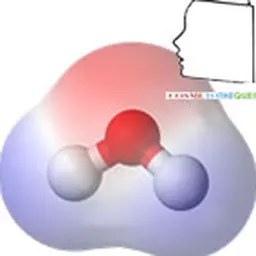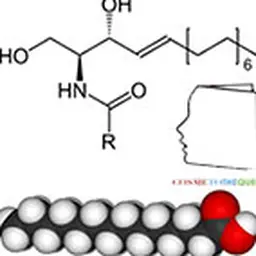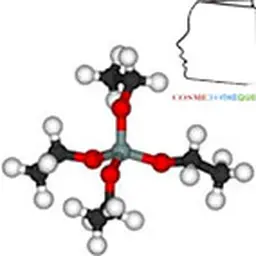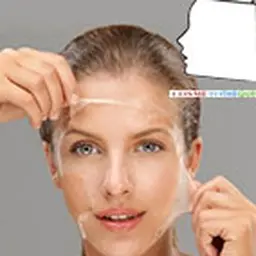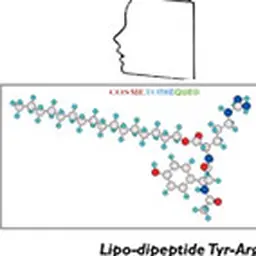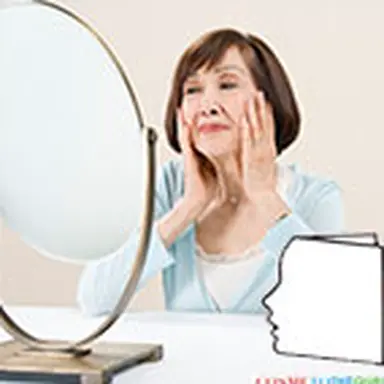
Trying to rewrite the history of anti-aging skin care products is like trying to rewrite the history of beauty in general. This is strongly associated with the fact that the skin is the only organ whose aging is seen. Women have always been concerned about the accompaniment of ageing, its"concealment" or even its"treatment". It would be long and tedious to make an exhaustive inventory of all the solutions that have existed. However, let us recall the major stages in the history of anti-aging products and the main ingredients that accompanied them.
Lecture given by Jean-Claude Le Joliff on behalf of the Cosmétothèque during the Journées de la Société Francophone d'Ingénierie et d'Imagerie Cutanée which held a conference in January 2015 in Lyon.
After a long period of miraculous recipes (because all the major brands have in their history an episode of miraculous recipes), the practice quickly settled on a rather particular category of products, which we will call"nourishing creams". These are ointments, i.e. anhydrous systems, or rich and fatty creams also known as"cold cream", which are the basis of these products.
The role and function of active ingredients were completely secondary, often with very little emphasis. In one of the main products of that time, Nivea Cream, the remarkable ingredient, which has been highlighted, is an emulsifier to stabilize these formulas. It all began in 1911, when visionary pharmacist and entrepreneur Dr. Oscar Troplowitz realized the potential of Eucerit, an emulsifier developed by chemist Isaac Lifschütz. In Asia, traditions are also largely imbued with these issues. Thus, at the end of the 19th century, the Shiseido brand launched a skin care lotion entitled Eudermine . Again, the wording takes precedence over the role and nature of the asset types.
These products are very often based on the idea of rich creams made on the basis of formulas such as Galen cerat. These cerats appeared in the European pharmacopoeia from the 17th century. These are rich, fatty creams, sometimes made on the basis of anhydrous systems, i.e. without water. They are also water-in-oil emulsions with a high fat content. The role of these products was to"grease" the skin, and to compensate for the sensation of dry skin accompanying skin aging. The main ingredients are functional and occlusive. They have softening properties, such as lanolin alcohols or whole lanolin, emollient properties like vegetable oils, occlusive properties like mineral oils or humectant properties like glycerin.
Among the great products, let us quote the cream Nivea or even the cream Nutrix proposed in 1936 by Armand Petitjean, founder of the Lancôme company, formulated by Dr Velon, and presented as a"nourishing and repairing beauty cream", called"skin food".
Quite quickly, another type of product completes this offer. These are called"vitamin creams. We will remember that the beginning of the 20th century marked the discovery of this notion of vitamins (1912), or"vital amine", as well as that of the main vitamins, their mode of action, their role and their interest. Several specialties use this idea to supplement facial care products. Among the most remarkable, let us quote the cream Skin Vitamin proposed by Pond's in the 1930s.
Some vitamins are quickly reserved for pharmaceutical use and do not enter into the composition of these products as vitamin K or vitamin D. But almost all the others are used, with more or less success.
The anti-aging properties associated with vitamins A, E and C come later (1970s). Concerning Retinol, these are for example the products offered by the Lancaster group through a range entitled Resulting ®. The use of vitamin A or more precisely Retinyl acetate was the consequence of a collaboration with an English dermatologist, Dr A. Jarett, specialist in the physiology of the epidermis, who had published as early as 1970 an exhaustive study on the actions of vitamin A on the skin. The use of vitamin E as an anti-ageing active ingredient is strongly associated with the emergence of the concept of the fight against free radicals. The first products are proposed by the Guerlain brand, already a precursor many years before with products such as Good Woman's Secret one of the very first moisturizing creams at the beginning of the century. This range was entitled Evolution and had tocopherol acetate as active ingredient. It is also worth mentioning vitamin C and its three actions: lightening, antioxidant and stimulating collagen synthesis, as it remains with Retinol and Tocopherol the vitamin active ingredients still used and known to the public.
But let's go back a bit. In the discovery movement the role of estrogens The brands address the issue of anti-aging from the perspective of compensating for the drop in hormonal impregnation in women at the time of menopause. Indeed, medical knowledge has clearly identified this particular period and dermatologists have noted changes in skin quality. Hence the idea of compensating for this loss of estrogen production. The first products are based on glandular extracts such as the range Amor Skin proposed by a German brand Opterapia.
Then, they are quite quickly synthetic substances described as hormones, the development of synthetic estrogens dating from the 1930s. Indeed, and particularly in the United States, regulations have long allowed the use of hormonal substitutes such as estrogen, progesterone or pregnenolone. Thus, in the 1930s, Helena Rubinstein proposed a product composed of two specialities entitled Hormone Twin Youthifiers .
This situation lasted quite a long time, until the 1960s when regulations severely restricted the use of this type of substance.
In Europe, regulations do not allow the use of these hormonal derivatives, brands opt for another type of biological extracts, which gives rise to so-called"placental" creams. This practice was based at the time on the work of some researchers such as Filatov, whose theory consisted in using"biogenic stimulators" to improve the functioning of aging tissues. These substances are often biological extracts whose stimulating properties are known. Initially, human placental extracts are used, but these complicated and problematic practices are replaced by other types of biological extracts.
Rapidly, uses were oriented towards products based on animal placental extracts, mainly bovine amniotic fluid, easily accessible and widely available on the market. It is the basis of many specialties, including the famous Skin Life Cream Placene based, or as the range Amnioderm of Payot.
The basic demands are for example: cosmetics contained a'Vital Substance' which could provide rebirth of the skin, thus enabling the skin to remain in the'bloom' of babyhood; … would provide one with a younger appearance and with a look that was incredibly younger ( cosmetics containing a"Vital Substance" that can revive the skin, allowing it to stay in the"flower" of childhood allows it to look younger and look incredibly younger ).
In the 1950s, a similar substance appeared: the plant placenta, developed by a botany enthusiast, Dr Bernard Guillot. Based on gemmotherapy, phytotherapy by buds (NB: this approach will return in the 2000s with extracts of meristems which are incorrectly called"plant stem cells"), the plant placenta draws its effectiveness from the essential nutrients it contains: amino acids, peptides, mineral salts contained in plant tissues in its native state. Located under the pistil of young plants, it acts as a nourishing liquid by feeding the fruit during its growth.
Always looking for original solutions, other brands try a different way by using embryonic extracts in order to stimulate the skin. This approach is based essentially on the work of Alexis Carrel, Nobel Prize winner, who had shown the possibility of maintaining tissue survival in contact with such extracts. They were exclusively of animal origin, mainly from chicken. When used in cosmetics, the stimulating properties of these extracts are described as helping to heal and rejuvenate the skin, induce elasticity, reduce wrinkles, elevate muscle tone and even reduce swelling around the eyes !!!
In a search for originality that this industry continues to demonstrate, a whole series of substances with miraculous properties are also used, such as royal jelly, and several brands are interested in the use of this type of substances.
Some solutions based on the idea of technical progress are emerging, but sometimes associated with somewhat specific practices. The cream Tho Radia perfectly illustrates these attempts. The idea is to use radioactive salts to stimulate healthy tissues on the basis of concepts that had been evoked in this sense.
At the beginning of the 1970s, biology gradually entered the laboratories. This is done through the use of organic ingredients whose function is to activate certain essential biological processes such as cellular vitality or cellular respiration that we are beginning to know how to measure. Let us quote the Cream B21 Orlane-based biostimulant vitamin derivatives, or the FRE Cream of Chanel based on yeast extracts stimulating the production of ATP. It was at this time that the ATP booster concept was born.
The initiation of anti-aging products as we know them today dates from the mid-1980s. These products are installed under the effect of two elements : - a better knowledge of the physiology of skin biology, - a sociological effect associated with the baby boom: 1946 + 40 = 1986 !
Cult products appeared at this time and we can quickly quote: • Night Repair of the Estée Lauder Group, • Niosomes by Lancôme • Capture of Dior.
These products constitute real innovations because they propose very sensitive modifications of various aspects: - the nature of the products with the appearance of mono product, - new types of formulas, such as serums, - the contribution of technology, such as liposomes, - a new mode of communication, such as scientific sponsorship, - and so on
Therefore, anti-aging is interested in many biological processes. The biology and physiology of collagen are among the initiators, and the example of native collagen (D. Herbage and A. Huc at the CTC of Lyon) in anti-aging products illustrates very well this contribution of understanding the biological mechanisms of aging. Then the elastin takes over (Travaux de Ladislas Robert - Laboratoire de Bichimie du Tissu Conjonctif). Little by little, the use of undefined biological extracts, whose main role is to stimulate biological functions, is giving way to active principles whose definition is progressing, whose modes of action are increasingly precise and better and better controlled. However, some brands continue to offer more traditional products to compensate for aging. In 1983, Clarins launched a unique treatment, the Double Serum which combines in the same bottle all the raw materials known to fight against aging and improve the skin, anti-aging, anti-wrinkle and firmness: materials that cannot, a priori, cohabit together, some being soluble in water, others in oil. But the contribution of skin biology is strongly anchored in the anti-aging approach and remains the guiding thread of the industry. To date, there are many ways to do anti-aging. Without wishing to draw up an exhaustive catalogue, we can quickly quote(1): - products interested in prevention, including UV filter systems, photoprotectors, natural and synthetic antioxidants to trap free radicals, such as tocopherol, lipoic acid, OPC, polyphenols, etc…; - products interested in pollution: detoxification, autophagy, stimulation of the ubiquitous system, etc..; - products preventing glycation or allowing the deglycation of functional proteins; - the protection of genetic material, including in addition to simple systems, filters, OPC and polyphenols, endonucleases, active agents acting on telomerases, sirtuins and of course approaches based on epigenetics, a particularly attractive approach..; - active ingredients to compensate or replace what is"missing": ceramides, proceramides, collagen, elastin, organic silicon, etc..; - stimulation of biological systems involved in aging or anti-aging: to stimulate what is missing and repair processes. These include matrikines, biopeptides, growth factors, carotenoids, etc; - hydration, to be classified in this category also with all possible solutions ; - exfoliation: AHA, BHA, enzymes, biostimulants, gentle instrumental dermabrasion ; - dermocrisaption inspired by Botox : Argireline (INCI : Acetyl hexapeptide-3 ), SNAP-like, seaweed extracts, Boswellia extracts ; - products working by analogy with so-called"fillers": GAG and hyaluronic acid promoter in particular, lipopeptide (Matrixyl), plankton extract, vitamins, carotenoids, stimulation of collagen production, protection of dermal fibres, protection or reconstituents of MEC, etc., without forgetting the so-called"repulpants" products acting by stimulation of lipogenesis; - some physical or optical solutions like soft focus effects or collagen micro-sponges called"filling spheres" ; - approaches based on the correction of dyschromias, either by acting on melanin production or by addressing the skin structure, and, of course, the direct masking or make-up effects : - the hormesis effect, stem cells and particularly active ingredients derived by eliciting plant stem cells, microRNA, inflammation, skin innervation, glycokines, etc.. One of the key success factors of this whole approach is a better knowledge of skin physiology. Thus, many new active principles are based on the identification of processes involved in aging.
But another aspect has contributed significantly to progress and the development of new concepts and assets. This is skin engineering. Indeed, measuring the biophysical and biological characteristics of the skin has made it possible to understand precisely the mechanisms underlying the observed changes. This relatively new science regularly proposes advances to complete the range of concepts or usable assets. The adventure began at the end of the 1970s with the appearance of biophysical and cutaneous metrology techniques, following in particular work based on fingerprinting techniques that systematically studied the micro-topography of the epidermis surface. Several university teams have taken an interest in these issues and, little by little, equipment to assess these characteristics is invading laboratories. Biophysical methods are important at first.
Skin roughness and surface condition tests also allow significant progress. Some may remember the famous Silflo or the appearance of image analysis.
This cutaneous engineering confirms important notions concerning skin physiology, such as the presence and characteristics of the microdepressionary network (RmD). It also makes it possible to objectively measure the effects of certain products on the surface of the epidermis. Beyond its use as a mode of claim, it allows significant progress to be made in understanding these mechanisms. We are even seeing the appearance of the first personalized prescription marks based on the notion of taking impressions ( Concordance, 1980).
How will new trends impact these different techniques? Will Pro-aging, which is based on how to assume its aging, modify our perception? Globalization can also change it. Will cosmetic instrumental, which goes from the use of new active ingredients such as light, electricity, cold, impact these approaches? The near future will tell, but all this remains exciting to live and follow.
1. New trends In antiaging cosmetics Ingredients and treatment: an overview - Peter Clarys and André O'Barel - Handbook of Science and Technology - Third Edition - 2009 - 291-300.
|
Contribution made by Jean Claude Le Joliff Special thanks to Pierre Perrier, former R&D Director of Parfums Christian Dior and Jacques Leblay, former R&D Director of Guerlain. A biologist by training, Jean Claude Le Joliff was a man of R&D for many years. Successively in charge of R&D, then of Research and Innovation in a large French cosmetics and luxury group, and after an experience of creating a research centre (CERIES), he turned to innovation management. He has also been Associate Professor at the University of Versailles Saint Quentin (UVSQ) and remains a lecturer in several specialized courses: ISIPCA, IPIL, ITECH, UBS, UCO, SFC, etc. He is the founder of inn2c, an R&D and Innovation consulting company. Consultant to several international companies, he has actively participated in projects such as Filorga, Aïny, Fareva, and many others. He created the Cosmétothèque®, the industry's first conservatory of crafts and know-how. |




